When most drinkers think of Scotch, they think of the popular Scottish whiskey that has a very unique flavor apart from other styles. However, they’d be surprised to learn there’s also a Scottish beer known as Scotch Ale. This interesting ale is super malty with deep caramel flavors, along with a pretty boozy Alcohol by Volume (ABV).
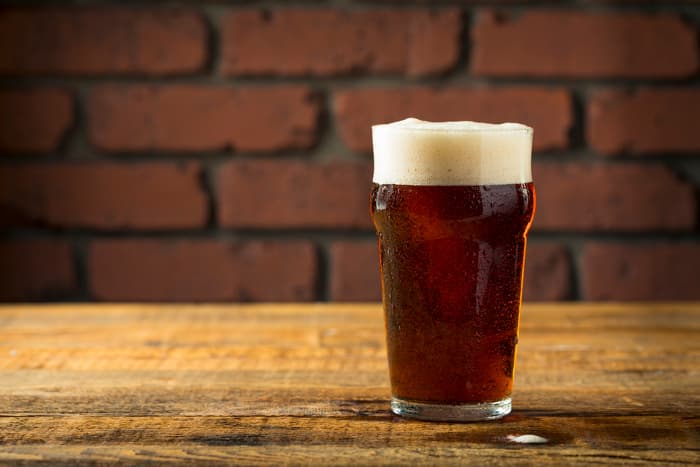
Scotch Ale is an interesting brew. It’s not flashy but has delicious toffee flavors with just a touch of smoke and notes of caramelized sugar to delight your taste buds.
Below, we’ll look at the history of this beer along with other fun facts like how it’s brewed, if you can brew it at home, and where you can buy some.
History of Scotch Ale
Scotch ale was first developed in Edinburgh, Scotland, in the 1800s. Since hops weren’t a readily available ingredient, the makers chose to focus on developing an ale from a more common ingredient — Malt.
The makers of this kind of ale borrowed from traditional English Strong Ale, known as Burton Ales or Old Ales, which was invented in the British Isles.
These strong, rich, dark amber ales led to the creation of English Barleywine, and soon the practice made its way into Scotland, where brewers created the unique character of Scotch Ale.
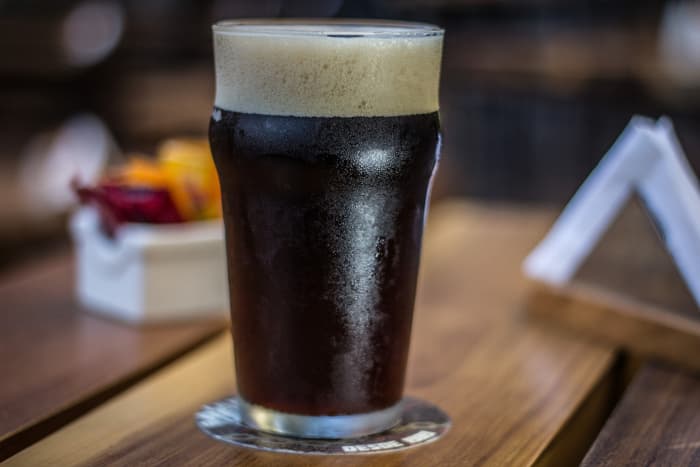
The Scottish brewhouses of that day would burn caramelized sugars, this in conjunction with a low amount of hops made for a beer in which Malt is the dominant ingredient. The brew was darker and focused more on toffee and caramel notes.
The confluence of submissive hops, malt character, and a less robust yeast strain, makes Scotch Ales distinct with a very unique flavor profile. And while aptly named, this beer style comes with quite a bit of confusing lingo.
The Differences Between Scotch Ale, Scottish Ale, and Wee Heavy
While they share a similar malt profile and name, Scotch and Scottish Ales do have one big difference. Also, whenever a brewer refers to Wee Heavy, it’s just a nickname for Scotch Ales.
Wee Heavys or Scotch Ales also has an ABV of above 6 percent and an increased final gravity, making them a bit sweeter. Meanwhile, Scottish Ales have a much lower ABV comparable to English Pale, coming in at around 3 to 5 percent ABV.
And while hops, water, and yeast are all still important ingredients in ale, as they are with any beer, it can’t be overstated how big a role malt plays in giving both Scottish and Scotch Ales their incredible flavor.
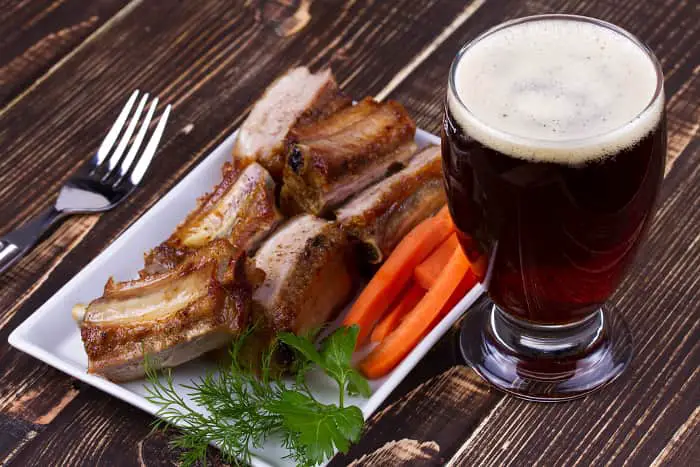
Brewing
Pale Malt is usually the standard. However, AleSmith, a brewer based in San Diego, California, and one of the few U.S. Breweries that make Scotch Ale, uses varying levels of crystal malts to accomplish two goals.
The first goal is imparting this ales’ distinctive amber and dark ruby color. The second is adding a higher sugar content to the wort, which carries over to the beer during the termination process. This helps create a higher ABV.
The creation of an environment rich in sugar is key to making a good Scotch Ale. The choice of grain is a good start. However, brewers will often add sugar such as molasses or syrup later in the brewing process.
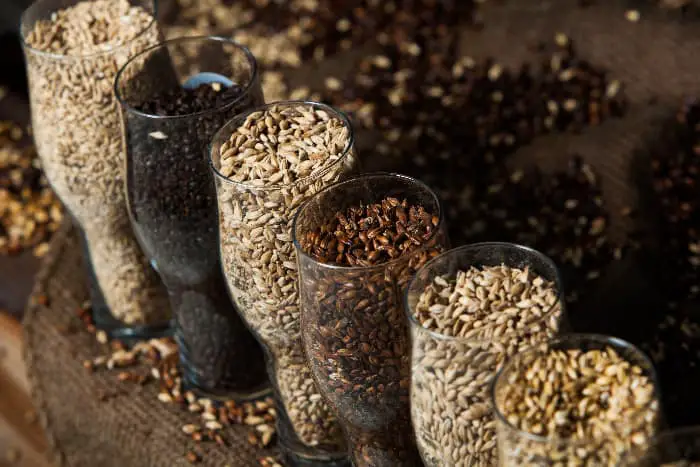
Also, a long boil will super concentrate the wort, creating a variety of complex sugars to feed the yeast. At AleSmith, they put their Wee Heavy through a long 90-minute boiling process to achieve some very boozy beer.
Hops don’t play a huge role in this kind of ale, but English hops like Fuggles, East Kent Goldings, or Admiral are known for their tea-like delicate floral character works well. The key is to have a hop that’s not overly aggressive as it can cancel out the Malt, which for Scotch Ale needs to be front and center, with the hops offering just a hint of flavor.
Finally, the yeast can either be American or British, but it certainly needs to be very clean without fruity esters usually found in Belgian beers. AleSmith uses its own West Coast yeast strain. While the region doesn’t matter when it comes to fermentation, the local temperature does.
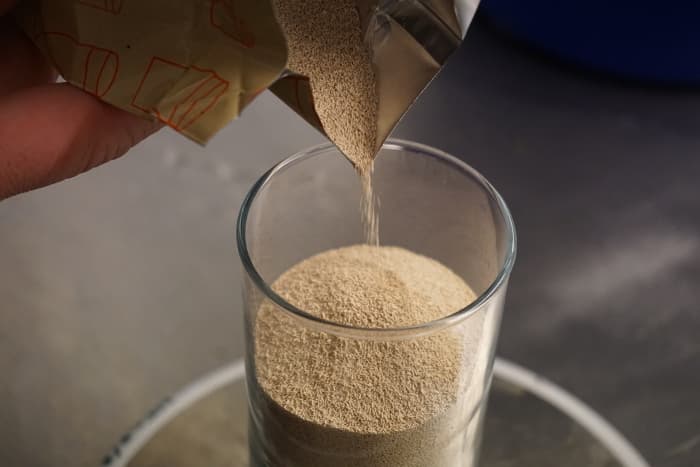
The average Scottish climates are a bit colder. This forced Scottish brewers to use a lagering technique, which is why Brewers today ferment Scotch Ales at a colder temperature.
A clean yeast strain (that has restrained esters), mild hops, cool fermentation temps, and more than anything, Malt taking center stage are the main factors involved in brewing any recipe for beer made in this style.
Molasses, Toffee, and Caramel, Oh My
There’s just a single word that comes to mind whenever you talk about Scotch Ale — sugar.
The different sugar flavors take center stage in the flavor and aroma. To give you some idea, molasses, brown sugar, caramel, treacle, burnt sugar, and toffee are the flavors prominent in any Scotch Ale.
Other types of Scotch Ale often include a peaty or light smokey flavor, but mostly, these ales are malty and rich.
If you had to compare this ale to food, it would probably be fruit cake, as it’s nutty, caramel, boozy, and sugary, a perfect brew for those cold winter nights.
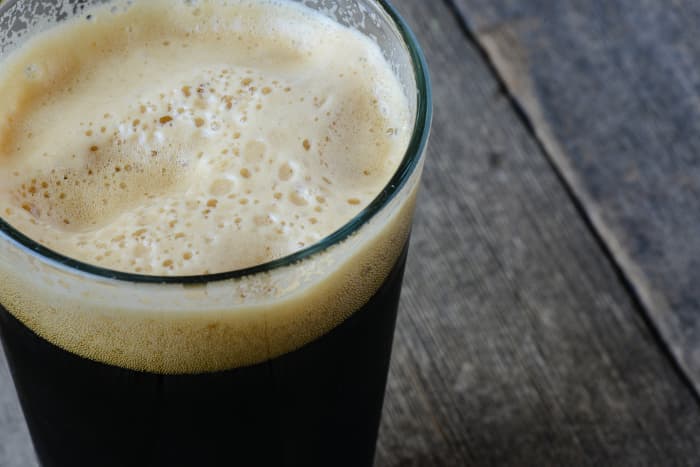
Who Would Love Scotch Ale?
Well, you don’t need to be a Scot to love Scotch Ale. In fact, if you love beer, there’s a chance you are already drinking a style that may be a very good gateway beer.
Folks who enjoy Pastry Stouts are likely to enjoy these ales. Once they get a taste for sweeter brews, they may want to try something a bit deeper and richer, like Scotch Ale.
Why Aren’t Scotch Ales as Popular in America?
If you ask most American drinkers about Scotch Ale, you’re likely to be met with a blank expression. Indeed, many drinkers have no idea this style even exists, which is one reason it’s not as big in America as imperial stouts and IPAs.
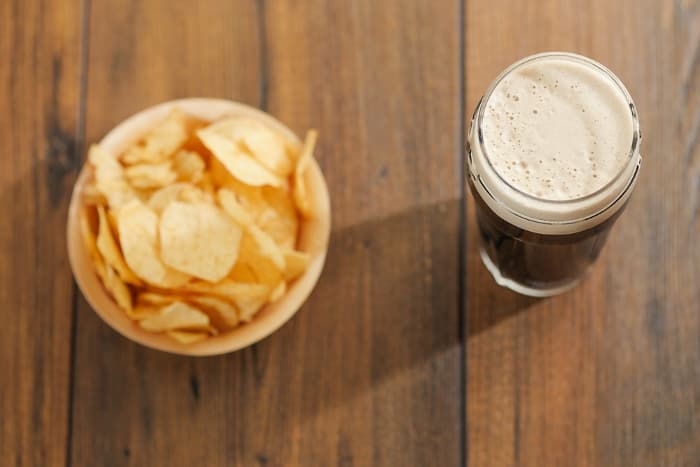
Despite the brew’s boozy backbone and many delicious flavors such as raisin, caramel, and fruit cake, the type of ale has had difficulty finding space in the American market since it has a style unfamiliar to most drinkers.
Most American craft drinkers like and appreciate flavors in beers that invoke nostalgia. For example, Hazy IPAs, remind folks of the orange juice they drank as kids. And Pastry Stouts make people think of their favorite desserts. People often search for flavors that bring up fond memories of childhood, such as vanilla, fruity, juicy, chocolate which are all common terms used to describe beer. However, this isn’t necessarily the case for Scotch Ale.
But, once you understand more about its unique flavors, you can recalibrate yourself to appreciate this older craft beer style.
Brewing Scotch Ale at Home
Yes, you can brew Scotch Ale from home. The main thing is understanding it’s a unique character and the emphasis on bringing the Malt to the forefront. You can find a variety of different recipes online. This one from Growler Mag is one of my favorites. It takes you step-by-step through everything you’ll need to do to create a fantastic Scotch Ale.
Where to Buy Scotch Ale?
You’ll likely find Scotch Ale at your larger chain liquor stores that are likely to carry a wider selection of brews. A few of the most popular beers in this style include:
- Barrel Aged Wulver Wee Heavy by Thirsty Dog Brewing Co.
- Wee Heavy – Barrell Aged by Alesmith Brewing Company
- Backwoods Bastard by Founders Brewing Co.
- Gravedigger Billy by Revolution Brewing
- Barrel-Aged Last Kiss by Pipeworks Brewing Company
- Splinters by Black Raven Brewing Company
- Whip Fight by Sun King Brewery
- Perpetual Peace by No Label Brewing Company
- Captain of the Coast by Pelican Brewing Company
- Traquair House Ale by Traquair House Brewery
- The Magnificent Scotch Ale by Silver City Brewery
- Mountain Man Scotch Ale by Jeremiah Johnson Brewing Company
- Louie’s Reserve Scotch Ale by Lake Louie Brewing
- Kilt Switch by 903 Brewers
Scotch Ale: Final Thoughts
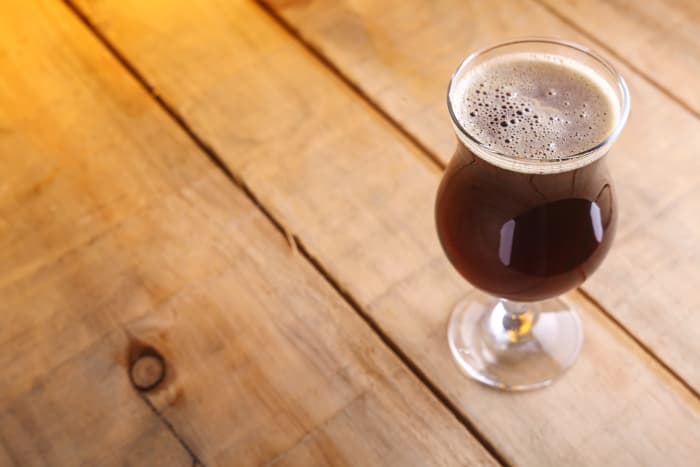
Scotch Ale is a very distinctive beer style that takes a different approach to brew than most other beer styles resulting in a one-of-a-kind flavor profile that’s definitely outside of what most American drinkers are used to. However, if you’re looking to try a new style with a bold and interesting character, give Scotch Ale a wee try, laddie!
To get up to speed on other kinds of beer, click here for our beer style profile blog posts.
